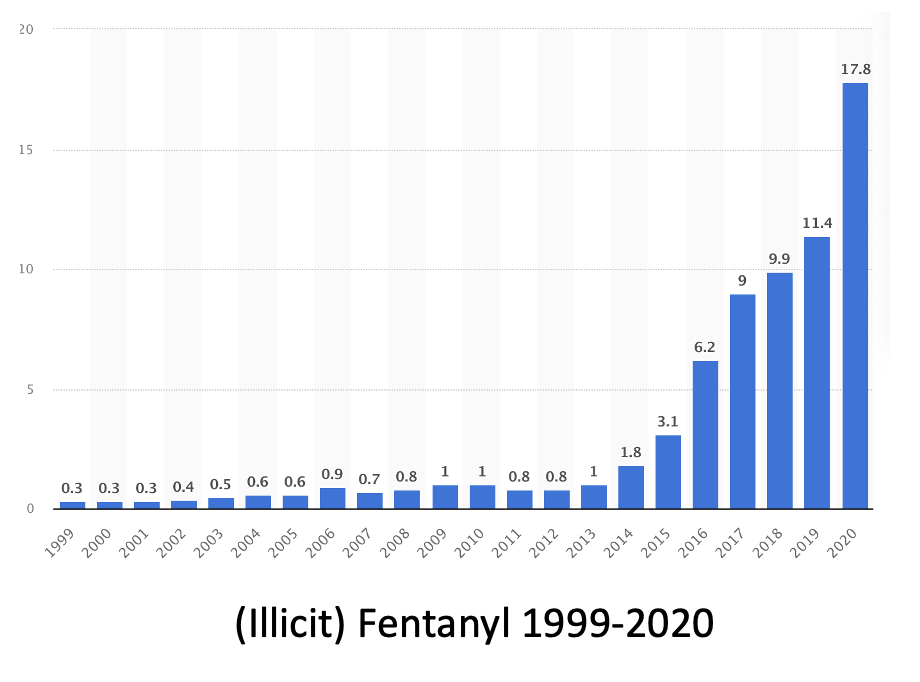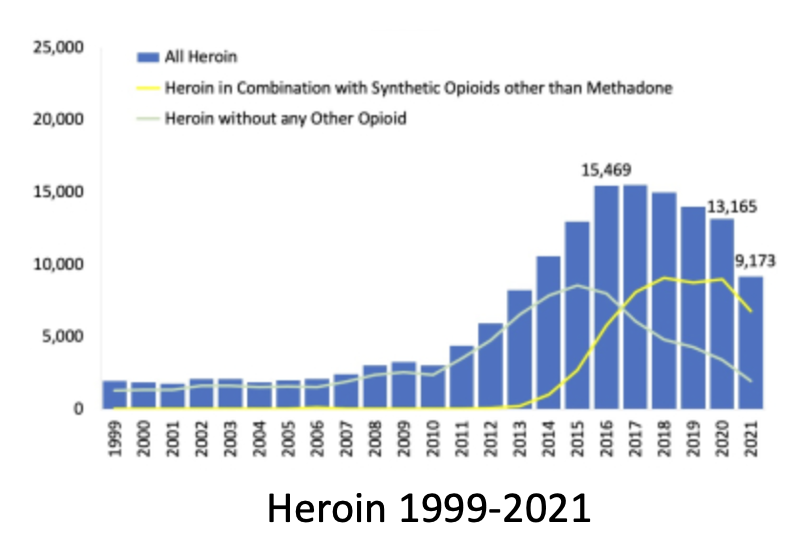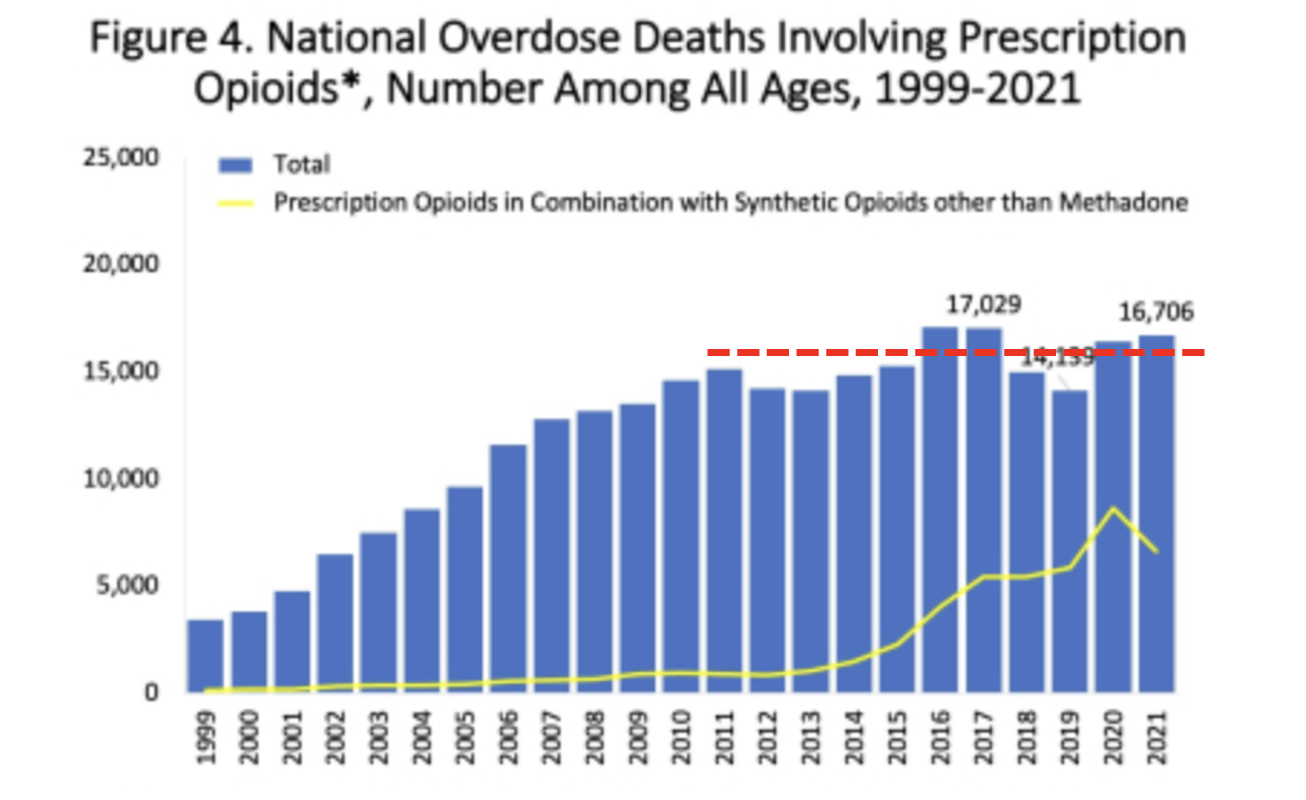
Some people just can't admit when they're wrong.
A number of times in the past I have questioned whether Andrew Kolodny, a psychiatrist and the president of the execrable Physicians for Responsible Opioid Prescribing (PROP), is qualified to be the media's go-to expert whenever drugs – especially opioids – are in a news article where a quote is needed.
When MedPage Today needed a quote about xylazine (aka Tranq, not an opioid), the horrific drug that I wrote about last October, unsurprisingly they went to Kolodny. [Emphasis mine]
Andrew Kolodny, MD, an expert in opioid policy and addiction medicine at Brandeis University in Massachusetts, said xylazine is probably widely diverted because it's unscheduled.
"If it were scheduled, distributors would have to have a suspicious order monitoring system. It's a DEA [requirement] that would tell you, for example, your Philadelphia region, or a particular veterinary practice you're distributing to, are outliers and you can't continue to fill that order. You have to report them," he explained.
"For sure, you would not see xylazine all over the place if it was scheduled," Kolodny added.
Kristina Fiore in MedPage Today, "Will Xylazine Become a Controlled Substance?"
These are mind-boggling responses, but they are consistent with Kolodny's stubbornly false narrative on opioids – that today's surge in opioid overdose deaths is a result of the overprescription of painkilling drugs. Going a step further, PROP members believe that a further reduction will save lives, a statement that is not only preposterous but also demonstrably false, something that is made clear in Aubry and Carr's 2022 article in Frontiers in Pain Research.
Based on the results presented in this paper and the current trends in opioid deaths, the policies of cutting [prescription opioid sales] to prevent deaths and hospital admissions... are unfounded and ineffective."
Aubry and Carr, Front. Pain Res., 04 August 2022
Sec. Pain Research Methods, https://doi.org/10.3389/fpain.2022.884674
Suffice it to say that any knowledgeable, rational person would know by now that the strict restrictions placed on legal (and safer) (1) drugs have resulted in a supply of illegal and far more dangerous drugs taking their place. This is not only not surprising but also predictable.
Dr. Jeffrey Singer, a Senior Fellow at the Cato Institute, a practicing surgeon, and ACSH advisor has written about the "Iron Law of Prohibition," a term coined in the late 20th century: "As law enforcement becomes more intense, the potency of prohibited substances increases."
Singer recently wrote in The Iron Law of Prohibition: Introducing “Tranq”:
The iron law of prohibition cannot be repealed. Drug cartels will keep generating new and more potent drugs, alone or in combination with existing ones, as long as policymakers refuse to end drug prohibition.
What is scheduling?
According to the DEA, the agency in charge of classifying drugs:
Drugs, substances, and certain chemicals used to make drugs are classified into five (5) distinct categories or schedules depending upon the drug’s acceptable medical use and the drug’s abuse or dependency potential.
Since xylazine is a veterinary product that is relatively new on the human scene it is not a scheduled drug, meaning it can be bought or sold legally requiring only a veterinarian's prescription. Kolodny proposes that scheduling xylazine would solve the emerging problem:
"For sure, you would not see xylazine all over the place if it was scheduled"
In what universe might this be true? Staying in ours, for now, it is trivial to demonstrate that his solution is nonsensical. There are plenty of historical data to prove this.
Scheduling does not reduce drug overdose deaths
1. Fentanyl
Pharmaceutical fentanyl, an essential medication, is a Schedule II drug – the most restrictive legal class of drugs. Yet that did not stop the US from being flooded with the illegal variety, which has been responsible for the majority of drug overdose deaths since the mid-2010s.

Fentanyl overdose deaths by year, 1999-2020. Source: Statista
2, 3. Cocaine and methamphetamine
Both cocaine and methamphetamine have legitimate (but limited) medical uses in humans and are also Schedule II. But this hasn't stopped the importation of many tons of illegal versions of both drugs, as demonstrated by the growing numbers of deaths:

Source: NIDA
4. Heroin
Heroin is a Schedule I drug (no legal use) and the pattern of increasing deaths over the past decade is similar, but with a wrinkle...

Source: NIDA
As was the case with illicit fentanyl, cocaine, and methamphentamine, there was also a spike in heroin deaths beginning in 2010, largely driven by the reformulation of OxyContin. But in this case, there is a drop-off beginning around 2017 when fentanyl began to take its market share, a trend that continues at the current time.
5. Prescription opioids

Source: NIDA
The death rate from prescription opioids did not soar like the four drugs above; the number of overdose deaths has remained constant over the last decade (red hatched line). Why? These drugs are safer and more difficult to come by than whatever is on the street. It is not a coincidence that we are seeing the most deaths from the most dangerous drugs or that the most dangerous drugs have been more widely-used since the crackdown on prescription painkillers began. The Iron Law is alive and well.
During the time when opioid prescriptions were cut by 60%, overdose deaths from illegal fentanyl, cocaine, and methamphetamine all surged. What is really going on? I can come up with only one rational explanation: In the past decade the misuse of illegal drugs of all kinds, not legal prescription pills, has increased and this is what is responsible for our ever-growing annual death toll. Scheduled or not, the deadliest drugs have been doing the killing.
Summary
- These data make it clear that the misguided or delusional anti-opioid crowd has been fighting the wrong battle all along and this has done plenty of damage with little or no benefit. One can only imagine how much better it would have been had the CDC not meddled in drug policy and PROP never formed.
- The result of this misguided war has been far more death and destruction, not less. And, of course, needless suffering from pain.
- America's real problem is not opioid addiction, it is an addiction, in this case to more dangerous illegal drugs, which took hold when safer drugs were restricted. But alcohol is always (conveniently) left out of the discussion.
- Whether or not the DEA slaps a label on the legal form of a drug will do nothing to prevent illicit versions of that drug from doing their damage. In all likelihood, it does more damage.
Back to Tranq
Let's take one more look at Kolodny's "solution" and appreciate how ridiculous it really is.
"For sure, you would not see xylazine all over the place if it was scheduled"
Does anyone really believe that this is correct? I sure don't.
But I do believe this:
We are now fighting a losing battle against heroin, fentanyl, and Tranq. Something worse will be next. Why not admit "defeat" and loosen up on oxycodone? Anyone with a working brain will be able to predict the result. Overdoses and death will drop and probably by a lot.
NOTES:
(1) Prescription opioids are far safer than drugs that can be bought on the street, both because the drug's identity and dose are known in legally prescribed medicines but not in counterfeit versions.



